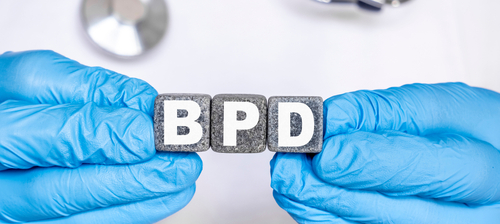
Borderline personality disorder (BPD) is listed in the Diagnostic and Statistical Manual of Mental Disorders, Fifth Edition (DSM-5) as a chronic mental health disorder. It characterized by a pervasive pattern of instability in interpersonal relationships, self-image issues, and difficulty managing emotions and behaviors, which interfere with one’s ability to function in everyday life. Although there is no single cause of borderline personality disorder, the National Institute of Mental Health (NIH) alludes to research that “suggests that genetics, brain structure and function, and environmental, cultural, and social factors play a role, or may increase the risk for developing borderline personality disorder.” Akin to BPD, the exact cause behind why individuals develop eating disorders remains unknown, but research has found that it is likely due to a combination of psychological, biological, and environmental factors.
Binge eating disorder (BED) is listed in the Diagnostic and Statistical Manual for Mental Disorders, Fifth Edition (DSM-5) as a severe, life-threatening eating disorder. According to National Eating Disorder Association (NEDA), it is characterized by “recurrent episodes of eating large quantities of food (often very quickly and to the point of discomfort); a feeling of a loss of control during the binge; experiencing shame, distress or guilt afterwards and not regularly using unhealthy compensatory measures (e.g., purging) to counter the binge eating.” Binge eating disorder is currently known to be the most common eating disorder in the United States.
Are They Connected?
Yes, binge eating, and borderline personality disorder are connected. More so, research has found an undeniably strong relationship between borderline personality disorder and dysregulated eating behaviors, such as binge eating. The symptoms of BPD often result in reckless and hasty actions, negatively affecting one’s relationships. Some highly regarded professionals in the mental health field suggest that it may be that the symptoms of BPD play an active role in the development of binge eating disorder. For example, common symptoms of BPD such as chronic impulsivity and urges to self-harm could lead to an individual engaging in detrimental eating behaviors, which would subsequently increase one’s susceptibility for developing an eating disorder. Conversely, engaging in dysregulated eating behaviors may cause an individual to experience overwhelming stress, which may trigger BPD in someone with a genetic vulnerability for the disorder. The prevalence of eating disorders is about 6 to 11% in those with borderline personality disorder, which is far greater than individuals with an eating disorder in the general public that amount to an approximate 2 to 4%. Hence, the rate of BPD in people with eating disorders is notably elevated when compared to the general population.
Disclaimer:
The information above is provided for the use of informational purposes only. The above content is not to be substituted for professional advice, diagnosis, or treatment, as in no way is it intended as an attempt to practice medicine, give specific medical advice, including, without limitation, advice concerning the topic of mental health. As such, please do not use any material provided above to disregard professional advice or delay seeking treatment.


